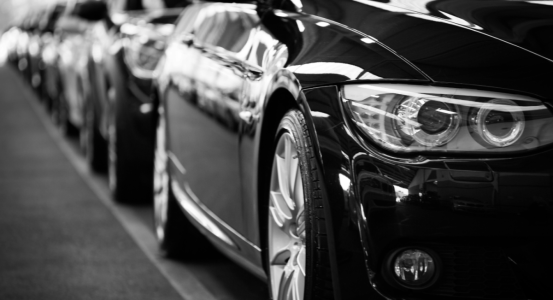How the real price of your next car could be hiding in plain sight
- Replies 0
It’s a strange time to be car shopping.
You may think you're paying the same as ever—until the final bill tells a different story.
Many buyers are walking into dealerships expecting one price, only to walk out paying much more.
While the sticker might look steady, the costs are rising from every angle—just not in ways that are easy to spot.
But here’s where it gets murky. Others are keeping their sticker prices untouched—at least on the surface. Instead of triggering backlash or political scrutiny, they’re raising your costs through behind-the-scenes changes.

For years, shoppers could count on generous rebates or low-interest financing offers. Those deals are drying up fast. The average incentive—once worth roughly 10% off the vehicle price—has dropped to 6.7%, according to Kelley Blue Book.
Meanwhile, delivery fees are creeping upward. Some customers are now paying up to $400 more just to get their new car to the lot, according to Edmunds.com.
These "destination charges" are usually non-negotiable—and rarely explained upfront. A longtime dealer summed it up best: “On the consumer side, they’re seeing several thousand dollars of actual-experience price increase, whereas the factory is saying, “No man, we didn’t raise prices at all.” Stealth is a good word for it.”
One large retailer faced direct criticism from a former US President for attributing price hikes to tariffs. That kind of attention is exactly what automakers are trying to avoid. So instead, they let the extra charges quietly pile up in ways most buyers won’t realize until the paperwork is already signed.
Sticker prices might be holding, but the true cost of a new car is still heading north. Average sale prices climbed 2.5% in just one recent month alone. That’s before adding insurance premiums—which are rising too, since newer cars cost more to repair and replace.
Here’s what’s changing for everyday buyers:

Have you felt the pressure of a car deal that didn’t match the sticker price? Were you surprised by a new fee or a missing rebate? Your story could help someone else avoid the same trap. Drop a comment below to share your experience, or let us know what car-buying tips you swear by. Together, GrayVine readers stay ahead of the fine print—and behind the wheel with confidence.
You may think you're paying the same as ever—until the final bill tells a different story.
Many buyers are walking into dealerships expecting one price, only to walk out paying much more.
While the sticker might look steady, the costs are rising from every angle—just not in ways that are easy to spot.
Sticker price is steady—but the bill isn’t
Some automakers are openly raising prices on new models. One brand recently said customers can expect to pay between $750 and $2,055 more, citing “current market conditions.” Another estimates spending over $2.5 billion annually on tariff-related costs. A third projects that figure could be as high as $5 billion if those tariffs continue.But here’s where it gets murky. Others are keeping their sticker prices untouched—at least on the surface. Instead of triggering backlash or political scrutiny, they’re raising your costs through behind-the-scenes changes.

Many buyers are walking into dealerships expecting one price, only to walk out paying much more. Image Source: Torsten Dettlaff / Pexels
For years, shoppers could count on generous rebates or low-interest financing offers. Those deals are drying up fast. The average incentive—once worth roughly 10% off the vehicle price—has dropped to 6.7%, according to Kelley Blue Book.
Meanwhile, delivery fees are creeping upward. Some customers are now paying up to $400 more just to get their new car to the lot, according to Edmunds.com.
These "destination charges" are usually non-negotiable—and rarely explained upfront. A longtime dealer summed it up best: “On the consumer side, they’re seeing several thousand dollars of actual-experience price increase, whereas the factory is saying, “No man, we didn’t raise prices at all.” Stealth is a good word for it.”
Why not just raise the price directly?
The strategy is simple. If the sticker goes up, customers push back. Companies also risk getting called out publicly—especially by major figures.One large retailer faced direct criticism from a former US President for attributing price hikes to tariffs. That kind of attention is exactly what automakers are trying to avoid. So instead, they let the extra charges quietly pile up in ways most buyers won’t realize until the paperwork is already signed.
Sticker prices might be holding, but the true cost of a new car is still heading north. Average sale prices climbed 2.5% in just one recent month alone. That’s before adding insurance premiums—which are rising too, since newer cars cost more to repair and replace.
Here’s what’s changing for everyday buyers:
- Fewer incentives mean fewer discounts and higher payments.
- Destination charges are inflating final costs with minimal notice.
- Outright price hikes are happening at select automakers.
- Insurance costs are increasing as car values rise.
- Who gets to ride in style? The inclusivity debate in luxury cars
- Over 200,000 cars recalled—see which brands and models are affected
Key Takeaways
- Carmakers are avoiding raising sticker prices directly by cutting incentives and increasing hidden charges like delivery fees.
- Major auto brands are passing on tariff costs by scaling back rebates and zero-interest deals, resulting in hundreds to thousands more per buyer.
- Some automakers have officially increased prices, while others rely on less visible methods to avoid public or political pushback.
- Insurance and vehicle sale prices are rising in tandem, adding to the overall financial burden for car buyers.






